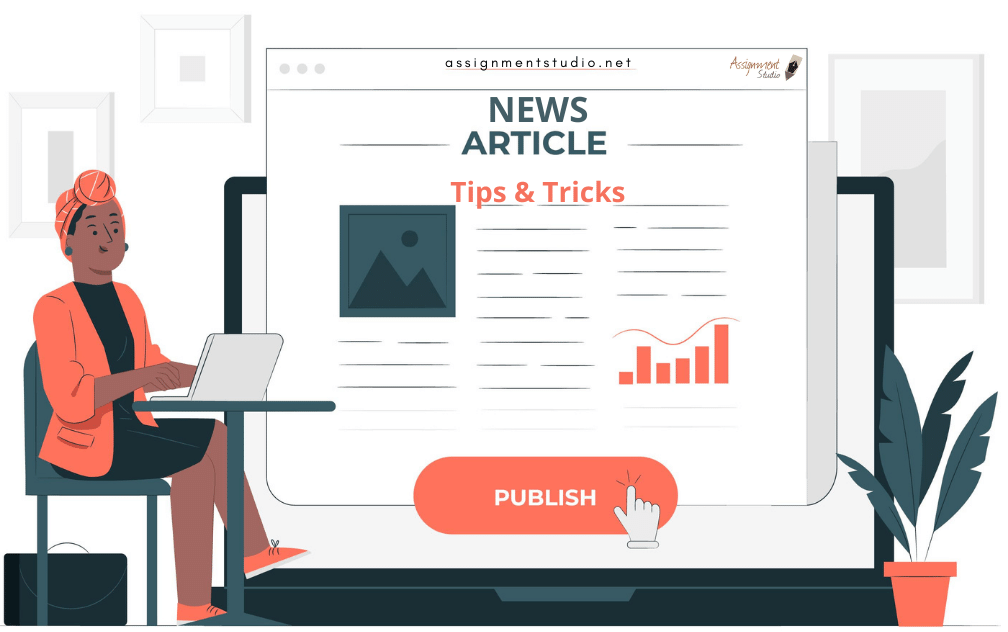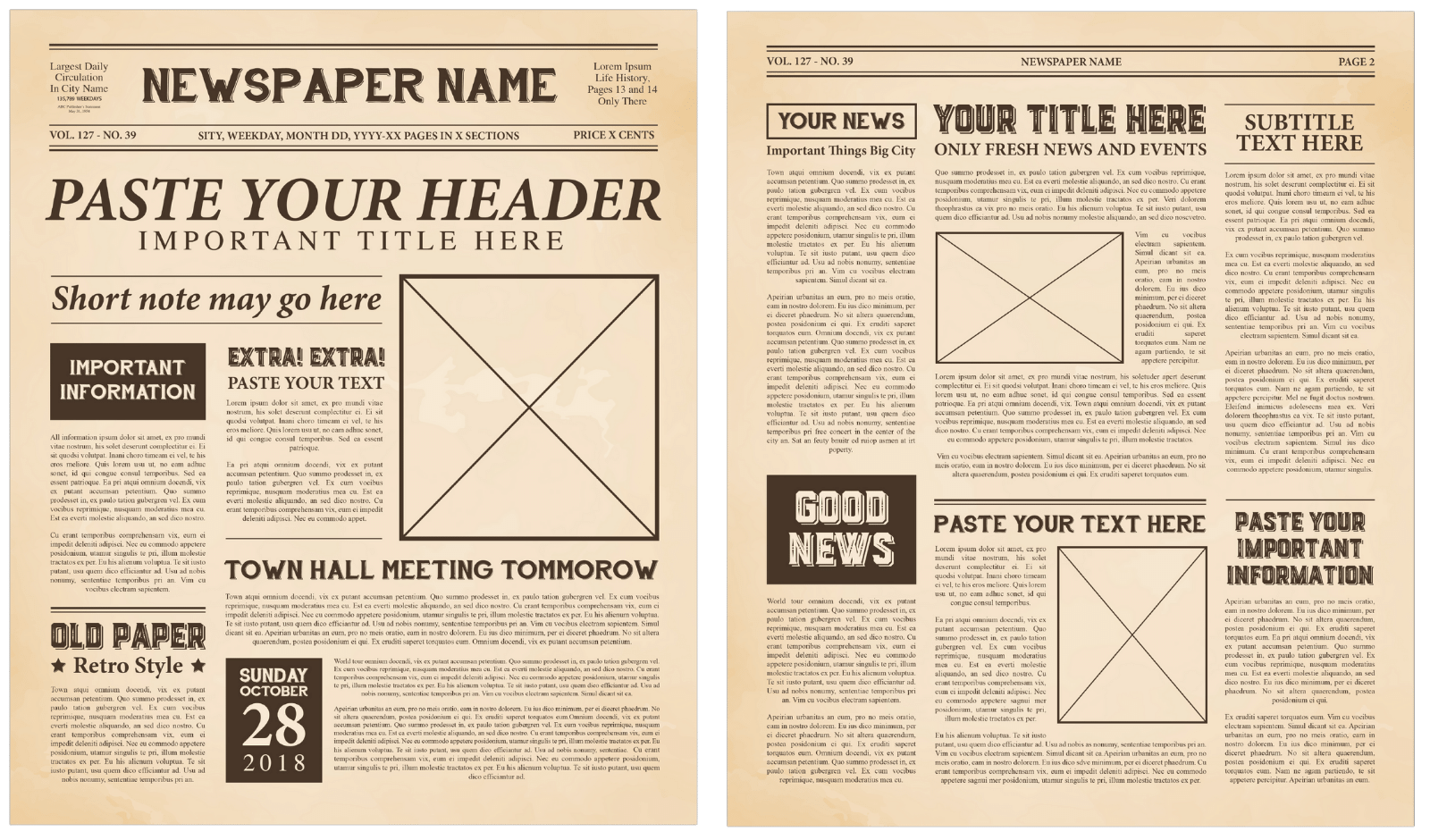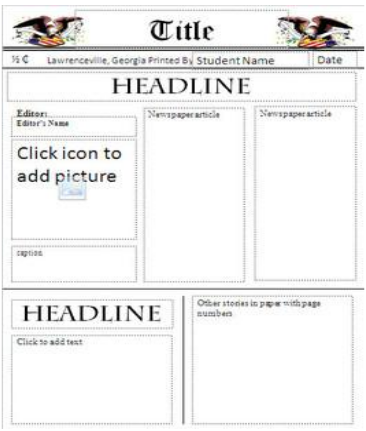
The thought of writing for a newspaper, whether you’re studying journalism or simply have a news story to write, can be daunting. Don’t give up! Assignment Studio provides all of the fundamentals, strategies, and methods you’ll need to write a clear, easy-to-read story. Writing a news article requires different techniques than writing an academic paper. You’ll need to know the difference between whether you’re writing for a school newspaper or looking for a writing job in journalism. Read this brief guide on how to write a news article if you want to write like a .
Table of Contents
What Is a News Article?
A news story, at its most basic level, presents the elements of a current event to the reader: who, what, when, where, how, and why. The emphasis on each of these parts will vary based on the story. The goal of a news story is to educate. If you’re writing about a bus accident, you might start with the who, where, and when because these will be the reader’s initial inquiries. Then move on to the how and why—questions that may arise as a result of the first ones.
Journalists no longer need to write long reports to describe a simple occurrence in the community because if a bike crashes, dozens of people will certainly tweet about it, thanks to Twitter and a few other real-time communication technologies.

How To Write a News Article?
The majority of us are familiar with how news articles are written to deliver information while also being engaging. Writing a news article differs from writing other articles or informative pieces in that it presents information in a specific manner and follows a defined framework. Journalists utilize a variety of tips and tools to write news stories, including:
- Start with the most important information. Every article’s introduction must immediately capture the reader’s attention and summarize the story in 25 to 30 words.
- Write a text that is both complete and concise. The first few phrases should include who, what, where, when, why, and how. Remember that most readers will only read about 250 words before skimming. You should make every effort to provide them with all of the information they require as quickly as possible.
- Use the present tense. It’s more efficient and requires fewer words. For example, “Germany was defeated by Australia in the World Cup final last night…“, takes longer to read than “Australia defeated Germany…“
- While people may be interested in the latest political polls, a food or product recall, or the weather forecast for tomorrow, putting a human interest in the story can build an emotional connection that will attract readers and keep them engaged.
- Journalism, like any other industry, has its own linguistic terms. Do you know what a byline is? At the beginning or end of a story, the author’s name appears in a box.
- In the first reference, spell out acronyms completely. For example, ROI, SATs, and FTSE, but what do they represent? Return on investment, Standard Assessment Tests, and the Financial Times Stock Exchange are the answers, accordingly.
- Make use of quotations. It’s a powerful thing to be able to communicate significant ideas through someone else’s language. When quoting others, though, make sure you get it right.
- Be honest with yourself. Although writers frequently joke that the truth should never stand in the way of a good story, you should never, ever write something you know is false. We all make mistakes, but a mistake is not the same as lying.
- Have your work proofread by someone else. Because few people can’t identify their own errors, having a coworker double-check your work before publishing is a good idea.
News Article Template

How To Cite a News Online News Article?
To cite a news article online, you should pick the following information from that particular article. Last name, first name of the author Initial or middle name. The title of the article. Newspaper name, date of online publishing, and URL.
Example
Beckham, David. “What is fracking and why is it so controversial?” BBC News, 16 December 2015, www.bbc.com/news/uk-14432401.
Newspaper articles in print
Shahbaz, M., & Liu, Y. (2012). Complexity of l2 motivation in an Asian ESL setting. Porta Linguarum, 18, p.115-131.
Newspaper articles with URLs
Raden, Z. (2015, January 28). The discovery of neuronal cells offers hope for Alzheimer’s and Parkinson’s patients. The Times. http://www.timesonline.co.uk/tol/news/science/medicine/article7005401.ece
How to Make a False News Article
STEP 1: Make a fake news phrasebook
Use a phrasebook for all of your fake news writing and editing and make it hilarious.
STEP 2: Create fictitious news stories
Change the verbs in the story to make the acts shocking and change the locations, circumstances, secondary characters, and outcomes to make the headline more sensational. Lastly, select a picture to match the tone of the news title.
STEP 3: Develop your website resources
Use social media to create a bunch of false personal and/or corporate accounts on Facebook, Twitter, YouTube, Instagram, Tumblr, LinkedIn, and other social media sites.
STEP 4: Profit your fake news
Subscribe to every website you own and every web advertising business you can discover. Share your articles on your own fake websites and social media accounts, as well as with celebrities and large organizations with thousands of followers.
STEP 5: Weaponize your false news
Make your stories as savage as possible and distribute them to celebrities and powerful organizations that support the politics you want to promote.
Article Generator for Fake News
It’s amazingly simple for anyone to generate a news article. You can plug in a false news piece, a fake image, and an imaginary author, and even apply a fake URL, just like you can build a birthday card with internet tools for your buddy. Then all you have to do is share it with the rest of the world.
People that spread fake news do so to gain money by placing advertisements. Those who make such information do so for a variety of reasons, not all of which are ideological. Many people have learned that absurd stories, distorted photographs, and other strange things are wonderful. Unfortunately, the same technological tools that can be utilized to create high-quality, instructive information can equally be used to deceive.
A News Article Example
On the internet, you can find hundreds of samples of news articles. Below is a picture of one of the best Australian news articles. If you want to learn how to write a news article, have a look at it.







